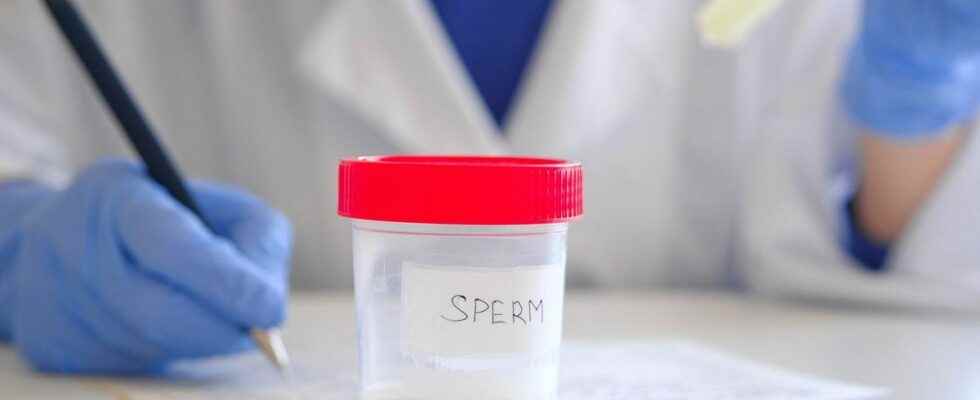Published on
Updated
Reading 2 mins.
According to an Israeli study, the number of spermatozoa decreased by 52% in less than 50 years. Several risk factors seem to be involved.
This is bad news for men. According to an Israeli study published this Monday in the journal Human Reproductive Updatethe number of sperm in the world has fallen since 1973.
A decline that “could threaten the survival of humanity”
This isn’t the first study to report a general decline in sperm quality in men. Nevertheless, this is the first ever done on a global scale: the authors have brought together data from 223 studies, from 53 countries on six continents – and this gigantic compilation brings together 45 years of research.
Thus, according to the researchers, if in 1973 there were 101 million spermatozoa on average in 1 ml… in 2018, things were quite different: the average was 50 million, i.e. almost half (-51.6% ).
Interesting fact: this figure is well above the threshold set by the World Health Organization (WHO) which estimates that men have a low concentration of sperm, at 15 million per millilitre. But the current average concentration is very close according to Dr Pietin-Vialle “The norm today is 20 million spermatozoa. per milliliter. The number of LDCs of male origin continues to increaser”.
A trend that is not about to reverse
“This decline has continued, as predicted in our earlier analysis, and has been accentuated since the year 2000 (…) It is now recognized as an important public health problem, in particular for the survival of the human species.”, underlines the epidemiologist Hagai Levine, principal author of the study.
For all scientists, these results serve to sound the “alarm bell”.
“Our new analyzes support our previous findings of an appreciable decline in sperm count between 1973 and 2018 in men from North America, Europe and Australia, and support a decline in unselected men from South America. South/Central, Africa and Asia.”
It remains to be determined what the causes of this continuous decline are.
According to Dr. Pietin-Vialle “Tobacco is the first risk factor in men and, in a couple, it reduces the chances of having a child by 50%. Cannabis, obesity, stress, pollution and endocrine disruptors are also important factors, which promote the appearance of abnormal sperm. From an environmental point of view, on the other hand, there is a serious lack of data“.
NO to diets, YES to WW!
A French platform serving the fertility of couples
In France, a new French start-up – the company Alifert – has tackled this scourge of infertility.
Resulting from French hospital-university research, this artificial intelligence platform contains an algorithm allowing couples, men and women, to test their fertility.
Alifert helps men and womensave valuable time” in their parental project.
“It is a tool that allows women, men and couples to assess their fertility. Once the scores for fertility, nutritional balance and physical fitness have been obtained, the platform delivers advice allowing couples or single people to act on their lifestyle (sport, diet, food supplements, etc.) to maximize their chances of having a child“says Prof. Rachel Levy, one of Alifert’s co-founders.
Good news: the platform is accessible everywhere in France and around the world.
The tool, which must be used as a preventive measure, does not however replace medical advice.
“The idea is to allow couples to benefit from the Alifert study and to work in total synergy with health experts.“, says the professor.
